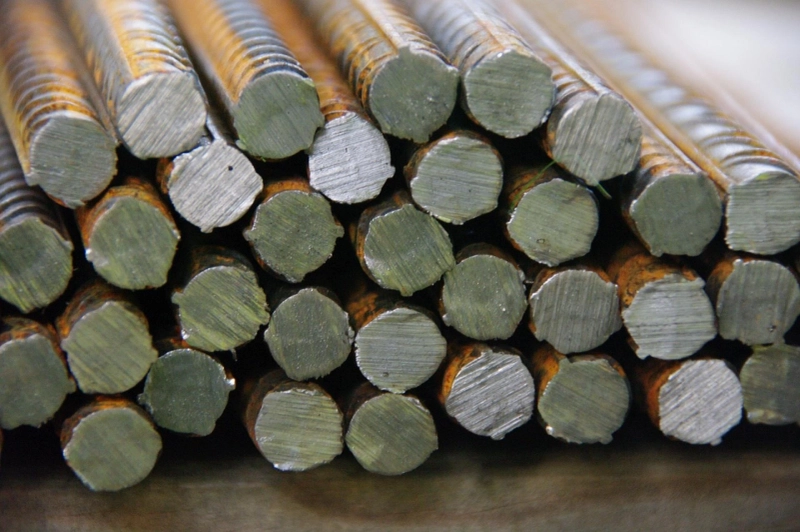Introduction
Steel is the backbone of modern infrastructure, playing a pivotal role in construction, manufacturing, and various other industries. In Pakistan, the demand for steel, particularly 60 grade steel, remains consistently high due to ongoing development projects and infrastructure initiatives. However, understanding the factors influencing 60 grade steel price in Pakistan is essential for stakeholders in the construction and manufacturing sectors. This article delves into the dynamics of 60 grade steel prices, examining the factors driving fluctuations and providing insights into market trends.
What is 60 Grade Steel?
Before delving into the price dynamics, it's crucial to understand what 60 grade steel entails. In Pakistan, steel grades are classified based on their composition, strength, and suitability for specific applications. 60 grade steel refers to a type of structural steel known for its high strength and durability. It is commonly used in construction projects, including bridges, buildings, and infrastructure.
Key Characteristics of 60 Grade Steel:
- High tensile strength
- Good weldability
- Excellent ductility
- Suitable for heavy-duty structures
Factors Influencing 60 Grade Steel Prices in Pakistan
The price of 60 grade steel in Pakistan is influenced by a myriad of factors, ranging from global market trends to local economic conditions. Understanding these factors is crucial for businesses and consumers alike. Here are some key determinants of 60 grade steel prices:
1. Global Steel Market Trends:
The global steel market plays a significant role in determining the prices of steel products, including 60 grade steel in Pakistan. Fluctuations in international steel prices, driven by factors such as demand-supply dynamics, trade policies, and geopolitical tensions, directly impact domestic prices. For instance, a surge in steel demand from major economies like China can lead to a rise in prices worldwide, including Pakistan.
2. Raw Material Costs:
The cost of raw materials, particularly iron ore and coal, significantly influences steel prices. In Pakistan, steel manufacturers rely on imported raw materials, and fluctuations in international commodity prices can directly affect production costs. Any increase in raw material prices is likely to be passed on to consumers, leading to higher prices for 60 grade steel.
3. Currency Exchange Rates:
Since Pakistan is a net importer of steel, fluctuations in currency exchange rates can impact the cost of imported steel products. A depreciation of the Pakistani rupee against major currencies like the US dollar can lead to higher import costs for steel manufacturers, thereby exerting upward pressure on domestic prices.
4. Government Policies and Regulations:
Government policies and regulations also play a crucial role in shaping the steel market in Pakistan. Tariffs, taxes, and import duties imposed on steel imports can affect domestic prices. Additionally, regulatory measures aimed at promoting local steel production or addressing issues such as dumping of cheap steel imports can influence market dynamics and pricing.
5. Domestic Demand and Economic Conditions:
The level of domestic demand for steel products, driven by factors such as construction activity, infrastructure projects, and industrial growth, directly impacts prices. Economic conditions, including GDP growth, inflation rates, and investment climate, also influence steel demand and, consequently, prices in the domestic market.
Market Trends and Price Analysis
Analyzing recent market trends can provide valuable insights into the dynamics of 60 grade steel prices in Pakistan. Here's an overview of the current market scenario and price analysis:
1. Price Fluctuations:
Over the past year, the prices of 60 grade steel in Pakistan have witnessed fluctuations due to various factors, including changes in global steel prices, currency exchange rates, and domestic demand. While there have been periods of price volatility, overall, the trend has been towards an upward trajectory, reflecting the broader dynamics of the steel market.
2. Seasonal Variations:
Steel prices in Pakistan often exhibit seasonal variations, with demand peaking during certain periods, such as the construction season. Factors such as weather conditions, project timelines, and government initiatives can influence seasonal demand patterns, leading to fluctuations in prices.
3. Impact of COVID-19:
The COVID-19 pandemic had a significant impact on the steel industry worldwide, including Pakistan. Lockdowns, supply chain disruptions, and reduced economic activity affected steel demand and prices. While the industry has shown resilience and recovery in the post-pandemic period, lingering effects continue to influence market dynamics.
Frequently Asked Questions (FAQs)
Q1: What is the current price of 60 grade steel in Pakistan?
A1: The current price of 60 grade steel in Pakistan varies depending on factors such as market conditions, raw material costs, and government policies. It is recommended to consult reliable sources or industry experts for up-to-date pricing information.
Q2: How do global steel market trends impact prices in Pakistan?
A2: Global steel market trends, including changes in demand, supply, and trade policies, directly influence steel prices in Pakistan. Fluctuations in international prices are often reflected in domestic markets due to Pakistan's dependence on imported steel products.
Q3: Are there any government regulations affecting the steel industry in Pakistan?
A3: Yes, the Pakistani government imposes various regulations and policies on the steel industry, including tariffs, taxes, and quality standards. These regulations aim to promote local production, ensure fair trade practices, and maintain product quality standards.
Conclusion
The dynamics of 60 grade steel prices in Pakistan are influenced by a multitude of factors, both global and domestic. Understanding these factors is essential for businesses, policymakers, and consumers to navigate the market effectively. By staying informed about market trends, regulatory changes, and economic developments, stakeholders can make informed decisions and mitigate risks associated with price fluctuations. As Pakistan continues on its path of development and infrastructure growth, the demand for 60 grade steel is expected to remain robust, underscoring the importance of monitoring price dynamics and market trends.



